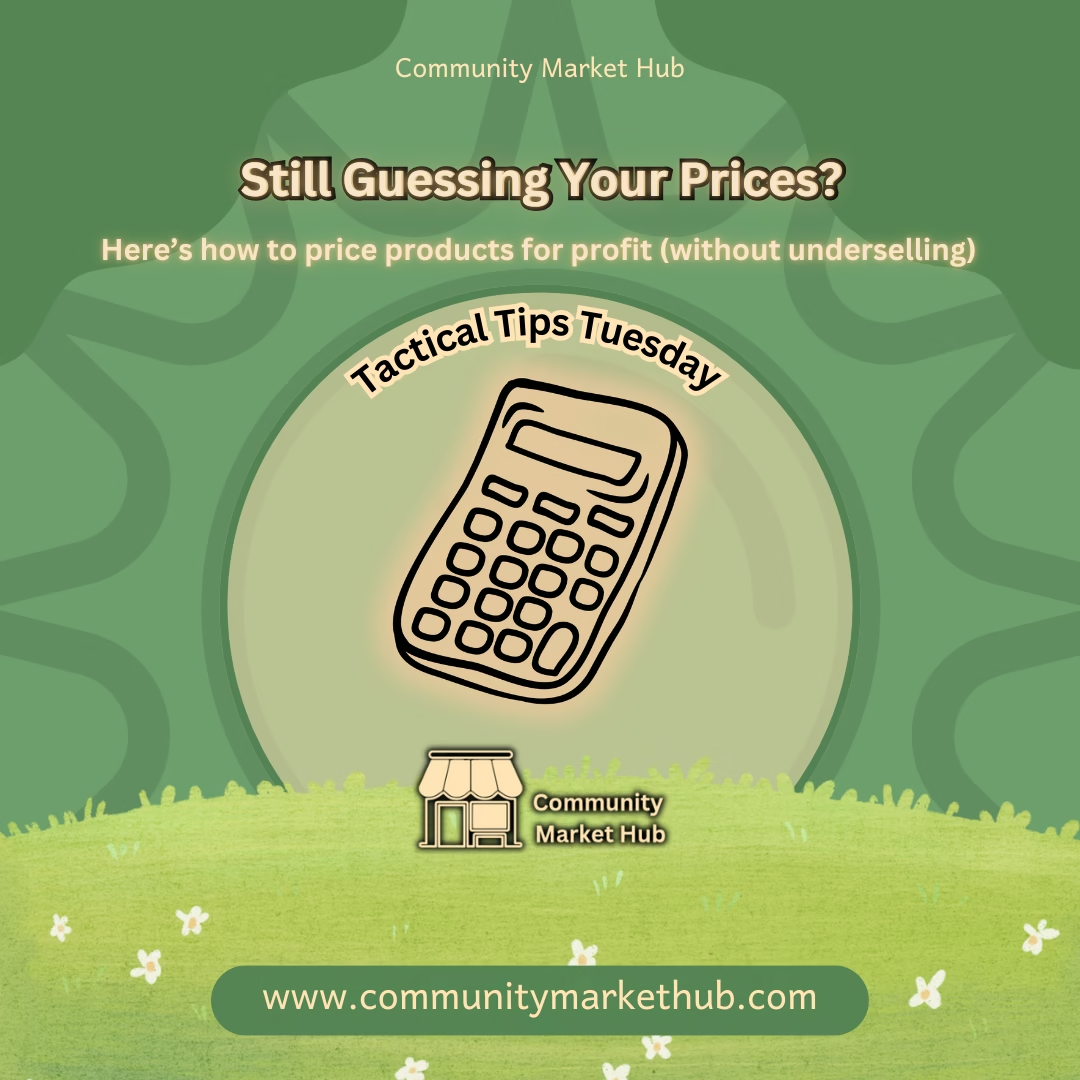No products in the cart.

3 Smart Steps on How to Price Products for Profit
(Without Underselling)
One big reason small businesses struggle is simple: bad pricing. If you guess your prices or copy others, you could lose money. At CMH, we teach vendors how to price products for profit — so your business doesn’t just survive, it grows. You need to cover costs, earn what you’re worth, and build a brand people trust. And yes — we’ll show you how.
Table of Contents
How to Price Products for Profit
🧵 Step 1: Know Your Base Costs
Know Your Base Costs
Before you can figure out how to price products for profit, you need to know your true costs. And not just the obvious ones. Many vendors forget to count things like their time, data, or delivery fees — but these matter just as much as ingredients or packaging.
Let’s break it down:
- Raw materials (like fabric, ingredients, etc.)
- Packaging (stickers, jars, bags)
- Time (what you’d pay yourself for the hours of work)
- Overheads (data, electricity, transport, rent)
Example: You make handmade soap.
- Ingredients: R25
- Packaging: R5
- Time & Overheads: R20
Total Cost: R50
This is your base cost. Never price below it. It’s the foundation of a healthy business.
💰 Step 2: Account for Platform Fees
Account for Platform Fees
Now that you know your base cost, it’s time to add your profit. But don’t forget about platform fees. On CMH, we use a commission model — which means you only pay a fee when you make a sale. No listing costs upfront.
To make sure you earn what you want, use the reverse pricing method. Here’s how to price products for profit the smart way:
Final Price = Your Desired Earnings ÷ (1 – CMH Commission Rate)
Example:
You want to earn R180.
Your product falls under a 15% commission.
R180 ÷ 0.85 = R211.76 → Round to R215
This way, you keep the money you want — and cover the platform fee.
Not sure what your product’s rate is?
⚖️ Step 3: Compare, But Don’t Copy
Compare, But Don’t Copy
It’s smart to check out what other vendors are charging. But here’s the truth: just because someone else sells it cheap doesn’t mean you should. You’ve done the work to calculate your costs — and now you know how to price products for profit, not just for sales.
If you copy someone else’s low price, you might end up working for nothing. And that’s not why you started your business.
Your product has value. The time, skill, and care you put in all matter. Some customers will look for the cheapest — but the right customers will pay for quality.
So compare to learn, not to copy. Stand behind your price with confidence.
✨ Bonus Tip: Offer Small & Large Sizes
Offer Small & Large Sizes
When times are tight, it’s tempting to lower your prices. But instead of cutting value, offer options.
One great way to do this is by offering both small and large sizes. This lets people try your product at a lower price — and often come back for more once they love it.
Example:
- Small bar of soap = R45
- Full bar = R85
This strategy keeps your value strong, while still being kind to your customers’ wallets. It also helps more people try your product — which builds loyalty and repeat sales over time.
Remember: smart pricing is about strategy, not discounts.
🚀 Final Advice: Pricing Is Power
How you price your product says a lot. It shows what you believe about your value. It sets the tone for your brand. And most importantly — it decides if your business grows or struggles.
Now you know how to price products for profit. You’ve learned to count your costs, plan for fees, and price with confidence.
And if you need help? We’ve got you.
This week only, CMH is offering free pricing support for registered vendors. Get one-on-one advice, real feedback, and help setting smart prices that make sense.
Tags: CMH pricing help, commission fees CMH, handmade business pricing, how to price products for profit, product pricing strategy, profitable pricing, reverse pricing method, small business advice, vendor growth, vendor tips south africa
Related posts
Radio Advertising South Africa: How Authentic Audio brings Brands to Life With a background in Broadcasting and Radio Advertising in... Continue reading
Peaceful Mind: Trauma Healing & Hypnotherapy with Lara Klopper It takes courage to heal — and even more courage to... Continue reading
How to Get More Sales Online (Without Ads) – The Power of Community 🧩 Want to Know How to Get... Continue reading
Best Places to Sell Products in South Africa: Top 5 Picks for 2025 📦 Best Places to Sell Products in... Continue reading
Hidden Pain Points in South African Ecommerce – 4 Vendor Killers to Fix Now 🧠 Most vendors aren’t failing because... Continue reading







Add comment